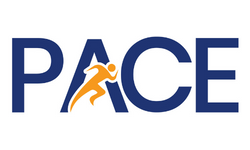I’m Katja Becker, owner and co-founder of Recordsforce. I’ve been in the document management business with my husband, Bill, since his first start-up called FisheNet which was founded in 1996. I’m currently the Controller at Recordsforce, but have also held positions ranging from Operations Manager, Document Scan Operator, Document Preparation Specialist and pretty much anything else that needed to get done in the early days!
Thinking about the early days of document management, boxes would come in, work instructions were either written or oral and work would begin. Document prep time was kept in a log binder and estimated at best. Scanning was done using random software and the number of images and documents scanned could only be determined when that batch was finished. If multiple Scan Operators worked on one batch then it was impossible to determine how much was completed by each employee and their productivity levels were a guess. Indexing time was estimated and you could really only tell how fast an employee was at data entry by watching them. Job profitability calculations were estimates. Real-time determinations of the accuracy of quotes were nearly impossible. Imagine the heartbreak and frustration of determining that a job was not profitable when creating the final invoice. In our industry this happened a lot.
Fast forward to document management with PACE. Today, proposals are written to accurately build in profit according to the type of work being completed. Past projects with similar document types can be used to determine accurate pricing as PACE shows real-time job profitability. Boxes come in and are barcode scanned, which begins the tracking process. Work instructions are added to PACE and are automatically presented and reviewed by each employee that will work on the project. PACE prohibits any employee from working on a project when they have not approved the work instructions to ensure that you remain compliant with all regulations, which makes SSAE-18 certifications a piece of cake to maintain.
Document prep time is automatically calculated whenever an employee is in the prep task. Additionally, when the employee takes a break, eats lunch or has a meeting, they simply log out of the prep task so that the hours counted for prep are actual prep hours. This gives our customers peace of mind that they are not being overcharged. Each Data Entry Operator can work a batch at any time, again, only having the data entry task counted for time. Each Scan Operator’s time is also tracked, as well as the images scanned, giving real time speed of each employee. We know who our top performers are across any given task and that helps us decide who to give raises to and allow overtime.
The main concern that I had with the cost of PACE was, when would I see the ROI? The time saved in automating time tracking for tasks and employees was immediate. The manual process was time consuming and that was eliminated across the entire job process. Each employee was trained on work instructions, which nearly eliminated re-works.
As new customers came on board, we had an entire working database of projects that we could compare new work to and where to come in on price. Job profitability became a guarantee. We even determined when it was time to let a customer go if they were not being charged enough and couldn’t agree to a price increase. The efficiency of employees continues to improve as we can weed out slow or non-engaged employees with objective measurements. The fact that clients can also have a real-time view into our process through the customer portal has attracted high value projects that are signing multi-year contracts. Since the implementation of PACE, we have seen revenue increase by 40% in the past 5 years. At the same time, profitability has increased to 30% from 20% in the same time period. In summary, PACE and the efficiency it has provided has paid for itself year after year

